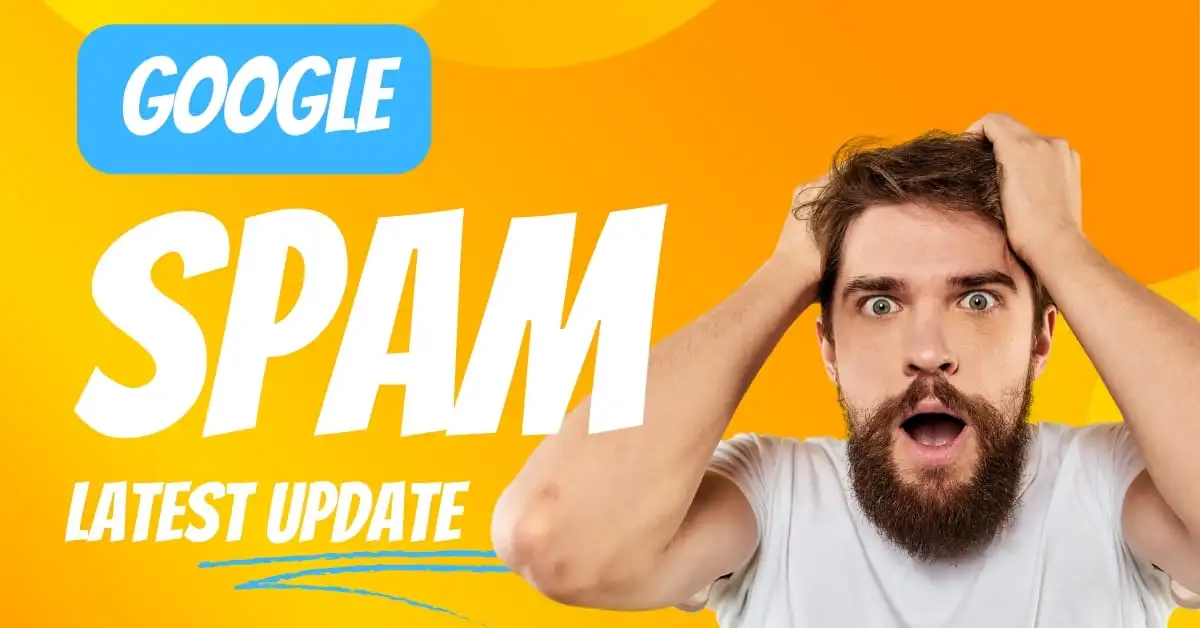
In this article we will discuss how Google spam update can affect a website, how you can keep your website safe from spam updates, how to restore your website traffic when affected by a spam update by Google, and an analysis of the June 2024 Spam Update. Google’s rules regarding spam are clear. This detailed and lengthy essay provides a comprehensive description of 16 different types of spam. These include Cloaking, Doorways, Expired Domain Abuse, Hacked Content, Hidden Text and Links.
Topics Covered in the Google Spam Update
Keyword Stuffing, Link Spam, Machine Generated Traffic, Malware and Malicious Behavior, Misleading Functionality, Scaled Content Abuse, Scraped Content, Sneaky Redirect, Site Reputation Abuse, Thin Affiliate Pages, and User Generated Spam. These are the major categories. We have already covered most of these 16 topics in this video. You will easily understand these SEO spam update and you can also protect yourself from them.
Most of these spam types are ones that webmasters don’t know about. For example, doorway pages. Most people think that this is a very new, unique method of ranking. They have seen some of their competitors who make these types of pages. That’s why they also pick normal content and try to rank it by changing the name of the city, state, or country. Maybe in some topics, in some niches, some websites are ranking. There can be different reasons for that. But these are called doorway pages.
Things to Avoid After Google’s Latest Spam Update
Whenever Google catches a website in any update, it will penalize it. Doorway pages should not be used. Apart from that, hacked content or malicious or misleading content policies often trouble webmasters. For example, you have a client whose content is not so good. You may think it will somehow work. Further, you might create backlinks and generate SEO.
There will be some traffic but that website will not grow because its content is considered spam by SEO’s latest spam update. So you should be aware of these 16 policies. To ensure that the website you are backlinking to does not fall into the spam category. Now, once you understand, let’s come to the topic of today’s video. In today’s article, we will talk about what can be different in this June 2024 update on spam.
Reasons That Lead to Google Spam Update
Google said that the spam update rollout started on June 20 and ended on June 27. But what was in this update? Right? So we have to do this work ourselves. Now, if you go back 2-3 months ago when the big core update came in March, there were a lot of announcements in which Scaled Content Abuse was a very big factor. Scaled Content Abuse means when websites were writing and posting content on a large scale with the help of AI tools like ChatGPT or Gemini.
This is the place where we need to pay close attention to the word “on a large scale.” Google has not stated anywhere that any SEO spam update containing AI content will be removed. If a website is publishing hundreds of thousands of pages every day with the help of AI, Google has introduced this Scaled Content Abuse policy to address it.
Parasite SEO
In addition, site reputation abuse was also announced by Google during this March Google spam update. Imagine for a moment that a tech blog on a subdomain starts posting information about Amazon discount coupons. This means that it is misusing the authority of the main website to rank useless content and generate revenue. Google attacked this type of behavior through the Site Reputation Abuse system. The term parasitic SEO and this new term are interchangeable.
Parasitic SEO is the process of placing content on a subdomain of a popular website and drawing traffic from it. Now, the Site Reputation Abuse System gives manual penalties, not automatic. The Scaled Content Abuse Policy was live on March 5 and the Site Reputation Policy was live on May 7.
So, through this June spam update, Google has tried to combine these two systems with other spam systems of Google. Remember that all these systems cannot be combined together and they are all based on AI algorithms. That’s why when they would have been live, they would have been live individually through this broad Google latest spam update.
Tired of not getting a JOB?
Digital Marketing Course
With 100% Job Guarantee
Learn effective marketing strategies & maximize your income.
The Spam Brain System
Google is integrating all the systems. There can be another reason for this update. Recently, Google’s Content Warehouse API data was leaked with some revelations about spam detection. Let’s go back a few years. In 2018, Google launched a system called Spam Brain which used AI algorithms to catch spam in content. This Spam Brain system was working consistently and the entire credit of the 5 billion spam pages that are caught per day on Google goes to Spam Brain.
The Spam Brain system was the first to catch spam in such a large number. Google kept this mechanism so secret that it did not disclose its existence for four years. Google initially revealed that it has a Spam Brain system in its most recent SEO spam update in the April 2022 Web Spam Report. It has also been operational since 2018.
Even after that, Google never told much about Spam Brain. In December 2022, Google said that the Spam Brain system would not only catch content spam but it will also catch link spam on both ends, making the system very powerful. But we don’t get much information about it. As a result, we get a lot of new information about the Spam Brain system from this Content Warehouse API leak.
The first thing that we get to know is that the Spam Brain system is not a single system through the Google spam update. There are a variety of versions of this system. And these different versions might work on different industry websites of different niches.
It is possible that on the websites of the YMYL category, a different Spam Brain version works and on other websites, a different Spam Brain version works. But now we are not able to find out how many Spam Brain systems are there, how many versions were there before the SEO spam update was introduced, and how they impact the websites of different industries. Number two, whenever the Spam Brain system visits a page, it generates a score which is called Spam Brain value.
This value is assigned to every page and this value decides how much Spam Brain value can be added to that page or how much Spam Brain value can be added in the non-Spam category. Thirdly, the most important thing that we get to know is that the Spam Brain system not only checks individual pages nor does it give a Spam Brain value score to those individual pages.
But it also gives a Spam Brain value score to the entire domain. So if the Spam Brain value of many pages of a website is high, then the Spam Brain value of the entire domain may be increased by Google. In such a situation, the chances of the entire domain being ranked are reduced.
It is very easy to guess if many pages of a website are being counted in the Spam category through the new Google latest Spam update then your entire domain will be counted as Spam. This information becomes very important. Because whenever there is an attack of malware on your website or there is an incident like a Japanese keyword hack and suddenly 200,000, 300,000, or 400,000 Spam pages and spam URLs are published on your website and Google also indexes them, this means that Google’s Spam Brain system will increase the Spam Brain value of your entire domain along with 400,000 or 500,000 URLs.
When you remove these malicious pages, these keyword hack pages from your website, the overall rank of your website will remain low until Google or the Spam Brain system does not believe that all the pages of your website have been removed and now only high-quality content is made on your website.
This also gives us a hint that there used to be more Spam content on a website, which you made unknowingly or because of any hack or keyword attack. If there are a lot of Spam pages on your website, then the Google spam update will catch it. Therefore, you should focus on publishing good content on your remaining website.
Suggestions
You should focus on publishing more content so that the Spam Brain value of your domain decreases. This will offset the increase in Spam Brain value. The chances of your domain and every page of your website being ranked will then increase. We get all this information from Google’s Content Warehouse API, not from the API leak. Google has not given much information about this API leak. And it is possible that they may not give it to us. But we can make an educated guess based on the data we have. So these were all the points about Google’s latest Spam update that we have found out from various research.
Digital Marketing Courses:
Data Analytics Courses :
Campus According To Your City :












